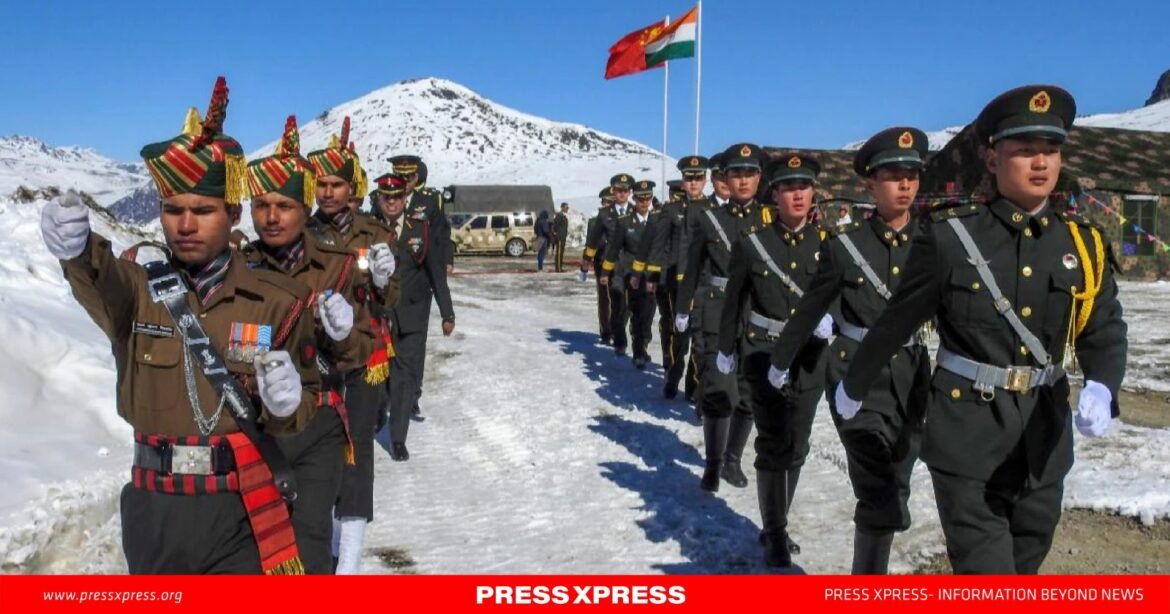China has maintained a significant military presence along the Line of Actual Control (LAC) with India, the Pentagon has revealed in its latest report. Despite partial troop disengagement in some areas, Beijing continues to deploy an estimated 1.2 lakh (120,000) soldiers along the disputed border, supported by advanced weaponry and infrastructure.
The report, released on Wednesday, highlights the People’s Liberation Army’s (PLA) stationing of over 20 combined arms brigades across the western, middle, and eastern sectors of the LAC, from Ladakh to Arunachal Pradesh. The deployment includes tanks, howitzers, and surface-to-air missiles, signaling a readiness for sustained operations in the region.
Strategic Entrenchment
According to the Pentagon, China’s military expansion along the LAC reflects a strategic effort to consolidate dominance in contested areas. While disengagement agreements have been implemented in zones such as Pangong Tso in Ladakh, the PLA has simultaneously bolstered its positions in other regions.
“Despite some troop withdrawals, the PLA remains entrenched in key areas along the LAC, underpinned by substantial investments in military infrastructure,” the report noted. These enhancements include logistics hubs, supply depots, and facilities for rapid troop mobilization.
The heightened military posture follows the deadly clash in the Galwan Valley in June 2020, the first lethal confrontation along the India-China border in over four decades.
New Outposts in Tawang
Fresh satellite imagery from December 19, analyzed by open-source intelligence teams, reveals the rapid construction of Chinese military outposts in the Tawang Valley of Arunachal Pradesh. The images, sourced from Maxar Technologies, show three newly established outposts strategically positioned to restrict Indian patrol routes in multiple directions.
These developments suggest that China has used recent troop disengagements as an opportunity to solidify its presence along the LAC. Experts argue that such moves are part of Beijing’s broader strategy to strengthen its foothold in contested border zones while adhering to negotiated terms superficially.
Limits of Disengagement
The latest disengagement agreement, announced on October 21, 2024, marked progress in reducing tensions in the Depsang Plains and Demchok areas of Ladakh. However, significant friction points—including Galwan Valley, Pangong Tso, Gogra, and Hotsprings—remain unresolved. Buffer zones established in these areas prohibit patrolling, effectively freezing territorial claims without resolving them.
Under the new agreement, patrolling in areas such as Demchok and Depsang has resumed but with strict limitations. These include caps on patrol team sizes, mandatory prior notifications to the opposing side, and restrictions on the frequency of patrols. Analysts warn that these measures, framed as innovations, represent concessions that limit India’s operational flexibility along the border.
India’s Infrastructure Push
In response to China’s aggressive posture, India has ramped up infrastructure development along the LAC. Key projects include the Darbuk-Shyok-Daulat Beg Oldie (DSDBO) road and the Nyoma Airfield in Ladakh, alongside tunnels in Himachal Pradesh and Arunachal Pradesh. The Modi government has also restructured military commands to enhance readiness in critical sectors.
Despite these efforts, India faces challenges in bolstering its overall military capabilities. Capital expenditure for defense has remained stagnant, with budget increases primarily allocated to revenue expenses such as salaries and pensions. The introduction of the Agnipath recruitment scheme may yield cost savings for equipment upgrades, but analysts caution that tangible benefits are years away.
A Delicate Balance
India’s dual approach—engagement with Beijing while reinforcing its military—has drawn scrutiny. Critics argue that negotiations without substantial enhancements to military capabilities could project weakness, potentially emboldening further Chinese incursions.
The Ministry of External Affairs (MEA) maintains that the current agreements aim to stabilize the border. However, observers note that the underlying issues—territorial disputes, infrastructure competition, and strategic mistrust—remain unresolved. As the boundary dispute continues to simmer, the risk of future clashes looms large along the 3,500-kilometer contested frontier.


